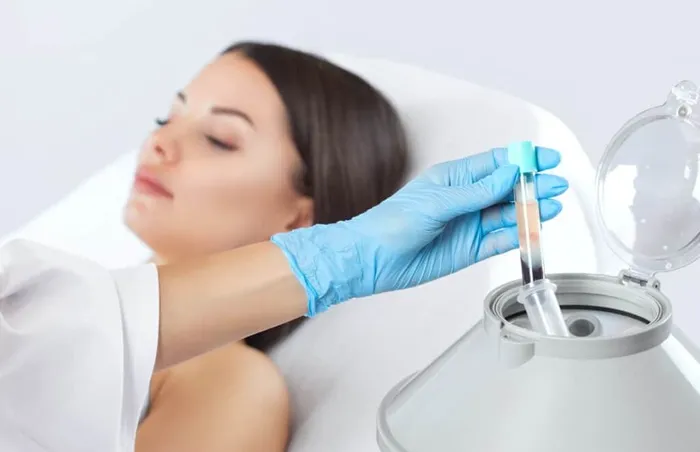Platelet-Rich Plasma (PRP) therapy has gained significant popularity in recent years due to its potential benefits in various medical fields, including hair restoration, dermatology, and orthopedics. PRP therapy involves drawing a patient’s blood, processing it to extract the platelet-rich plasma, and then injecting it back into the targeted area to stimulate healing and regeneration. The cost of PRP treatment can vary widely depending on several factors. This article will provide a detailed breakdown of the costs associated with PRP treatment, the factors influencing these costs, and what patients can expect.
Average Cost of PRP Treatment
The cost of PRP therapy can range from $500 to $2,500 per session, depending on the area treated and the number of sessions required. For hair restoration treatments, the cost may involve a package of multiple sessions, while joint treatments might require fewer visits. The median cost for PRP therapy is around $630 per session. However, it is important to note that these costs can vary significantly based on the specific treatment area, the number of sessions needed, and the expertise of the practitioner.
Factors Influencing PRP Treatment Costs
Treatment Area
The cost of PRP treatment can vary depending on the area being treated. For example, PRP injections for hair restoration typically cost between $1,500 and $2,500 per session. In contrast, PRP treatments for joint pain or other musculoskeletal issues may cost between $500 and $1,200 per session. The complexity and size of the treatment area play a significant role in determining the overall cost.
Number of Sessions Required
The number of PRP sessions needed to achieve optimal results can also impact the total cost. For hair restoration, multiple sessions are often required to see significant improvements. A package of three sessions might cost around $2,500. In contrast, some conditions may require only one or two sessions, reducing the overall expenditure.
Practitioner’s Expertise and Location
The experience and reputation of the practitioner performing the PRP treatment can influence the cost. Highly skilled and experienced providers may charge more for their services. Additionally, the location of the clinic can also affect the price. PRP treatments in urban areas or specialized clinics may be more expensive than those in smaller, rural settings.
Facility and Equipment
The type of facility and the equipment used for the PRP treatment can also impact the cost. Advanced clinics with state-of-the-art equipment and technology may charge higher fees. The use of specialized tools and imaging techniques, such as ultrasound guidance, can add to the overall cost.
Benefits of PRP Therapy
Natural Healing Process
PRP therapy uses the body’s own platelets, which are concentrated in the plasma of the blood. These platelets contain growth factors that accelerate tissue repair and regeneration. Since it relies on the patient’s own biological material, PRP is a natural way to heal and rejuvenate the skin without the use of synthetic products.
Minimally Invasive
The PRP procedure is minimally invasive, involving drawing a small amount of blood, processing it to extract the platelet-rich plasma, and injecting it back into the targeted areas. There is minimal discomfort and little downtime, making it an excellent option for those seeking subtle yet noticeable improvements.
Effective for Hair Restoration
PRP therapy is particularly effective for hair restoration, helping to combat hair loss by stimulating dormant hair follicles and promoting thicker, fuller hair over time. The growth factors in PRP help regenerate hair follicles, leading to improved hair density and overall scalp health.
Long-Lasting Results
While the initial results from PRP treatment may take a few weeks to appear, they are long-lasting. After a few sessions, the improvements in skin texture, tone, and hair density can last up to a year or more, making it a worthwhile investment in skin and hair health.
Safe with Minimal Side Effects
Since PRP uses the patient’s own blood, the risk of allergic reactions or adverse effects is minimal. The most common side effect is mild swelling or redness at the injection site, which typically subsides within a day or two.
Conclusion
PRP therapy offers a versatile, natural solution for various medical and aesthetic concerns, including hair restoration, skin rejuvenation, and musculoskeletal injuries. The cost of PRP treatment can vary widely based on factors such as the treatment area, the number of sessions required, the s expertise, and the location of the clinic. While PRP therapy is generally not covered by insurance, its benefits, including natural healing, minimal invasiveness, and long-lasting results, make it a valuable investment for many patients. Consulting with a qualified healthcare provider is essential to determine if PRP therapy is the right choice for your specific needs and to understand the associated costs and benefits.
Related topics:
- The Cost of PRP for Hair Loss: A Comprehensive Guide
- How Much Effective Is PRP for Hair Loss: What You Need To Know
- How Long Does Perimenopause Hair Loss Last?


